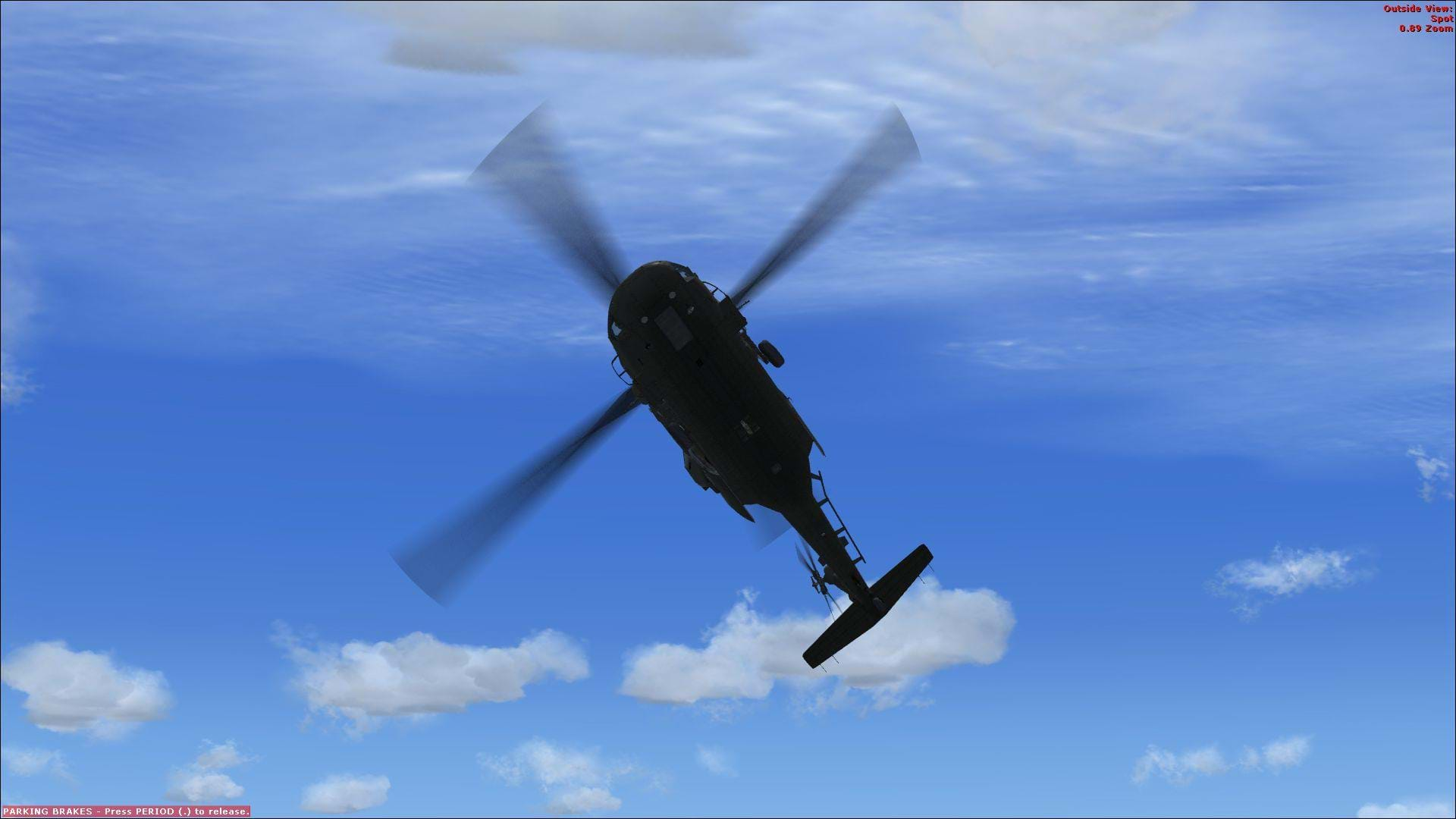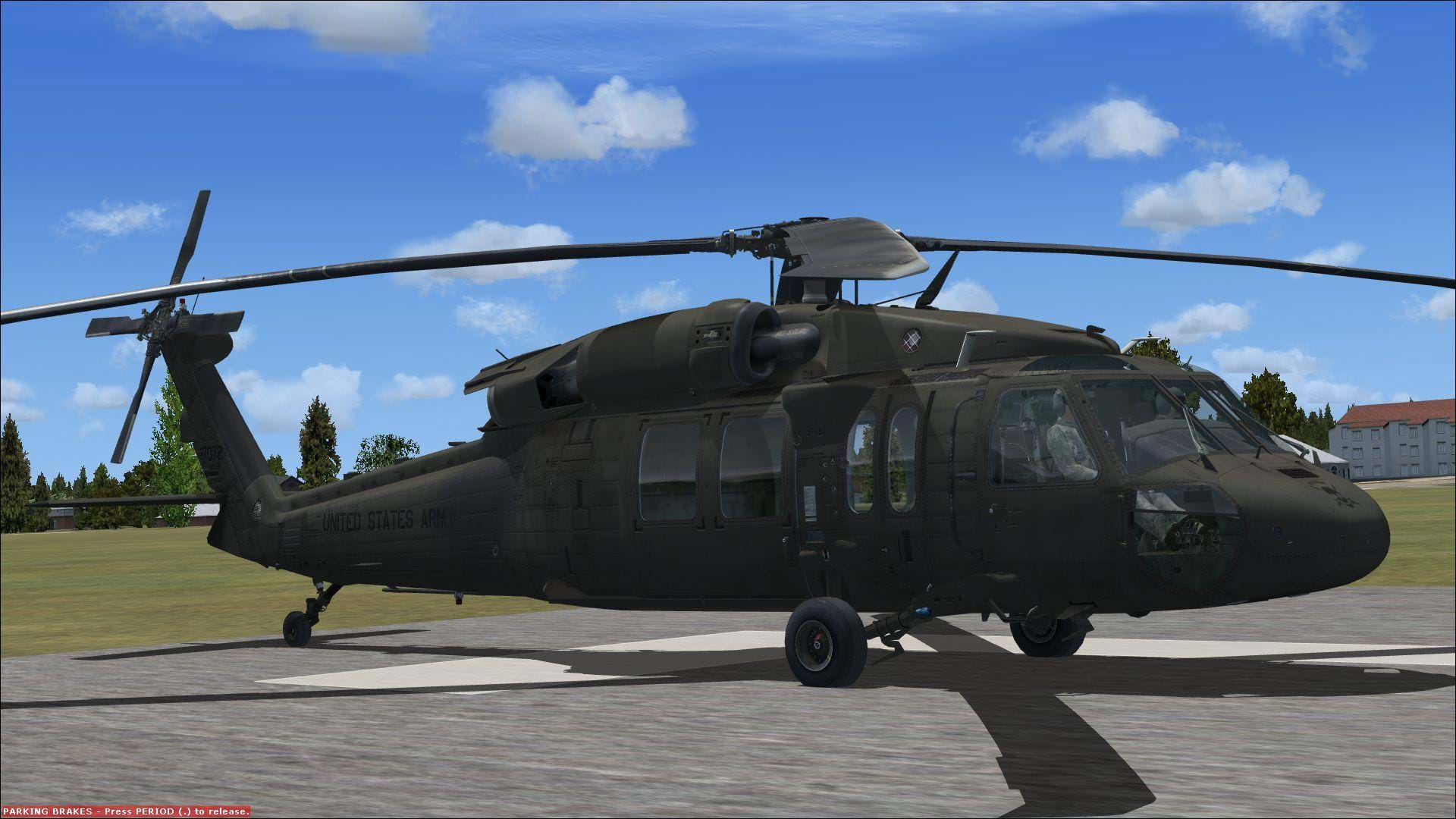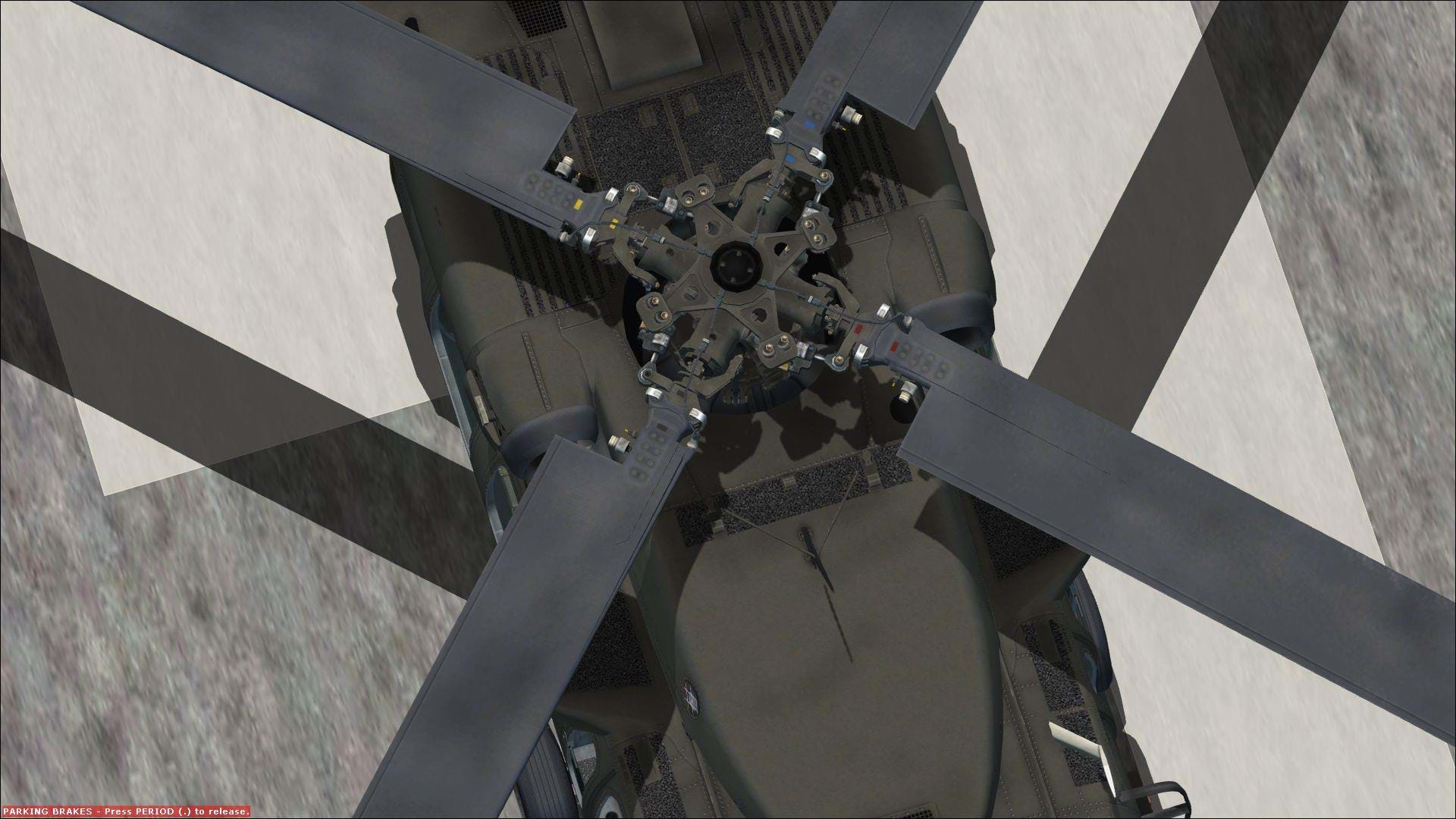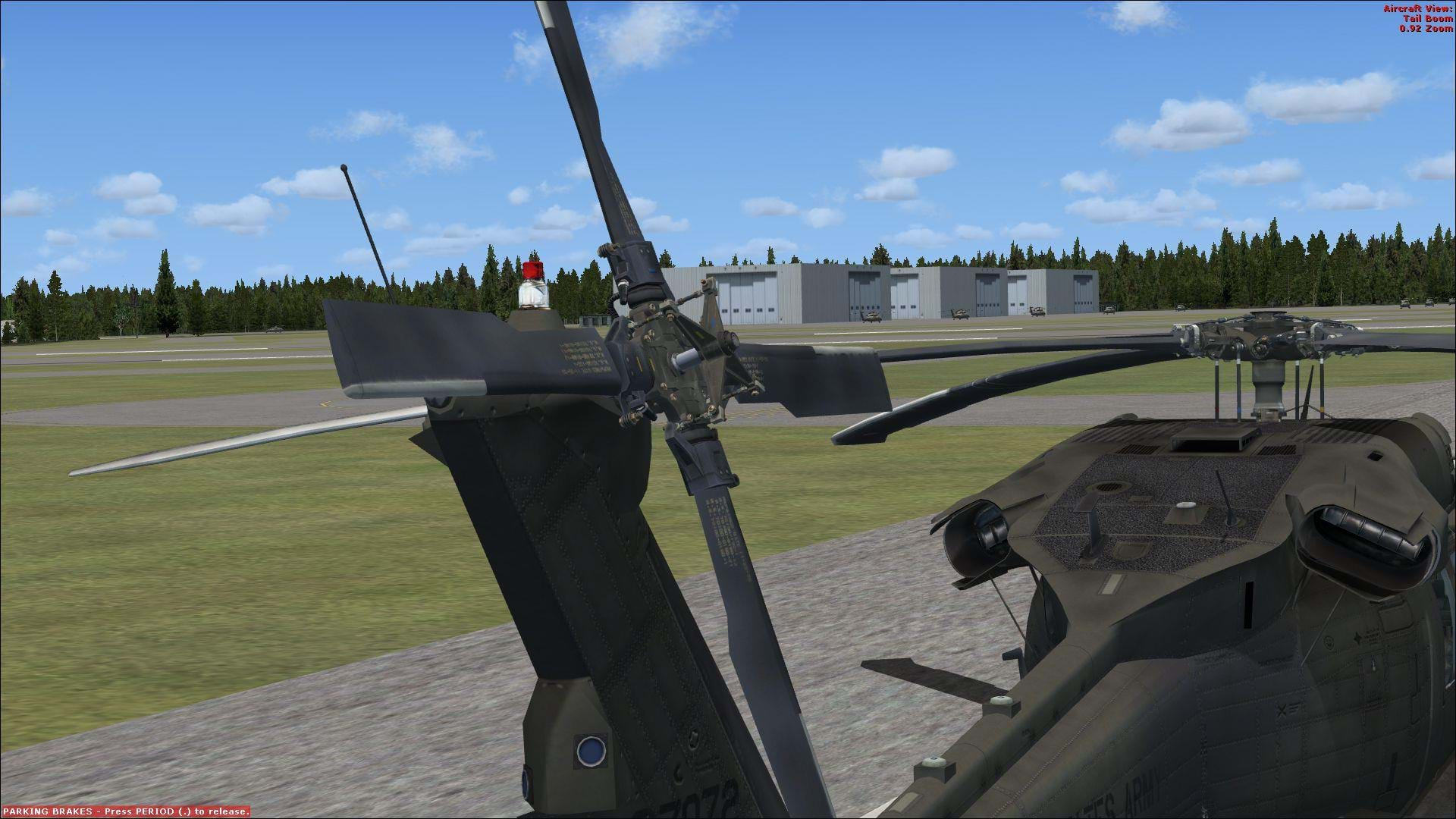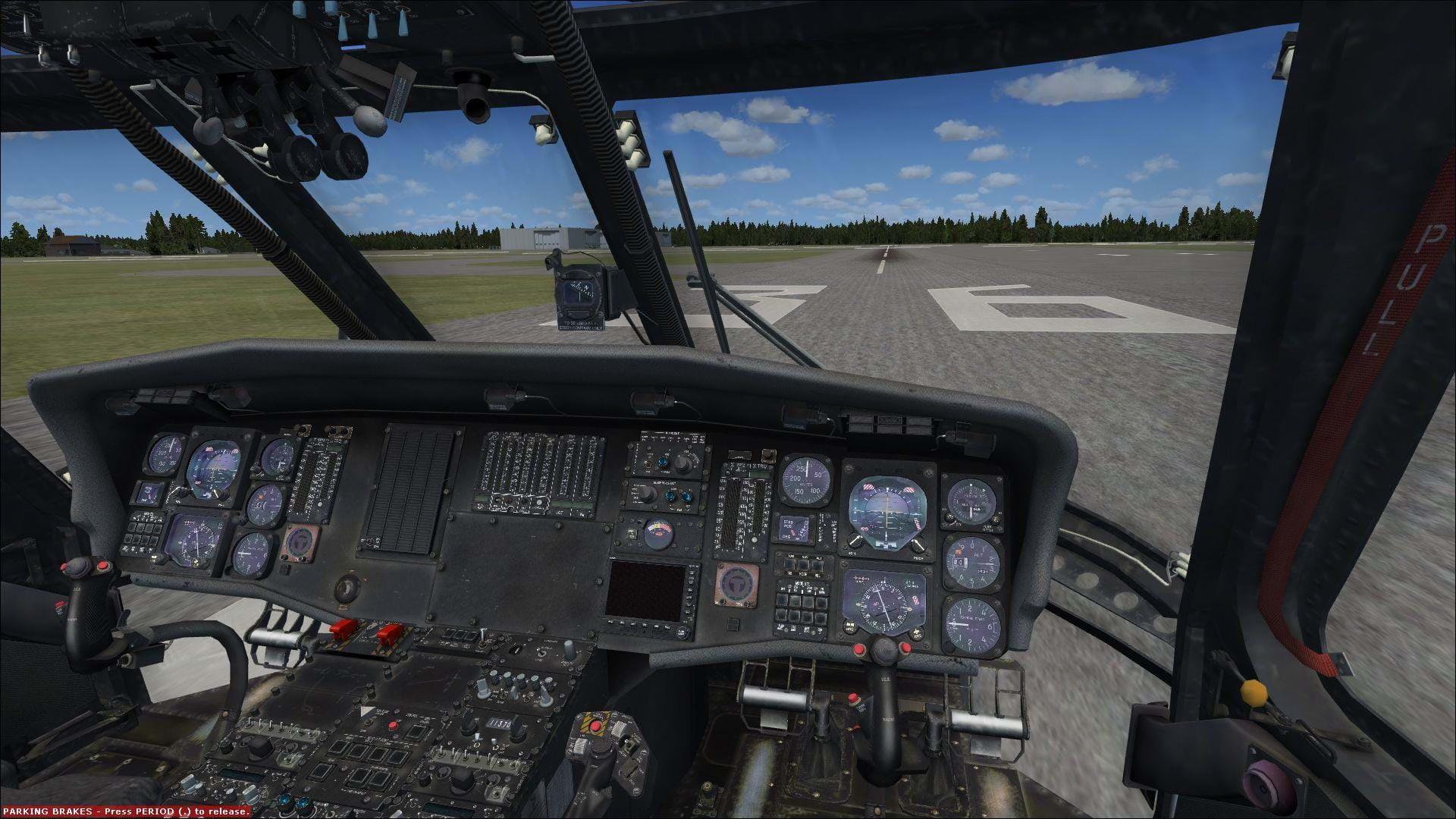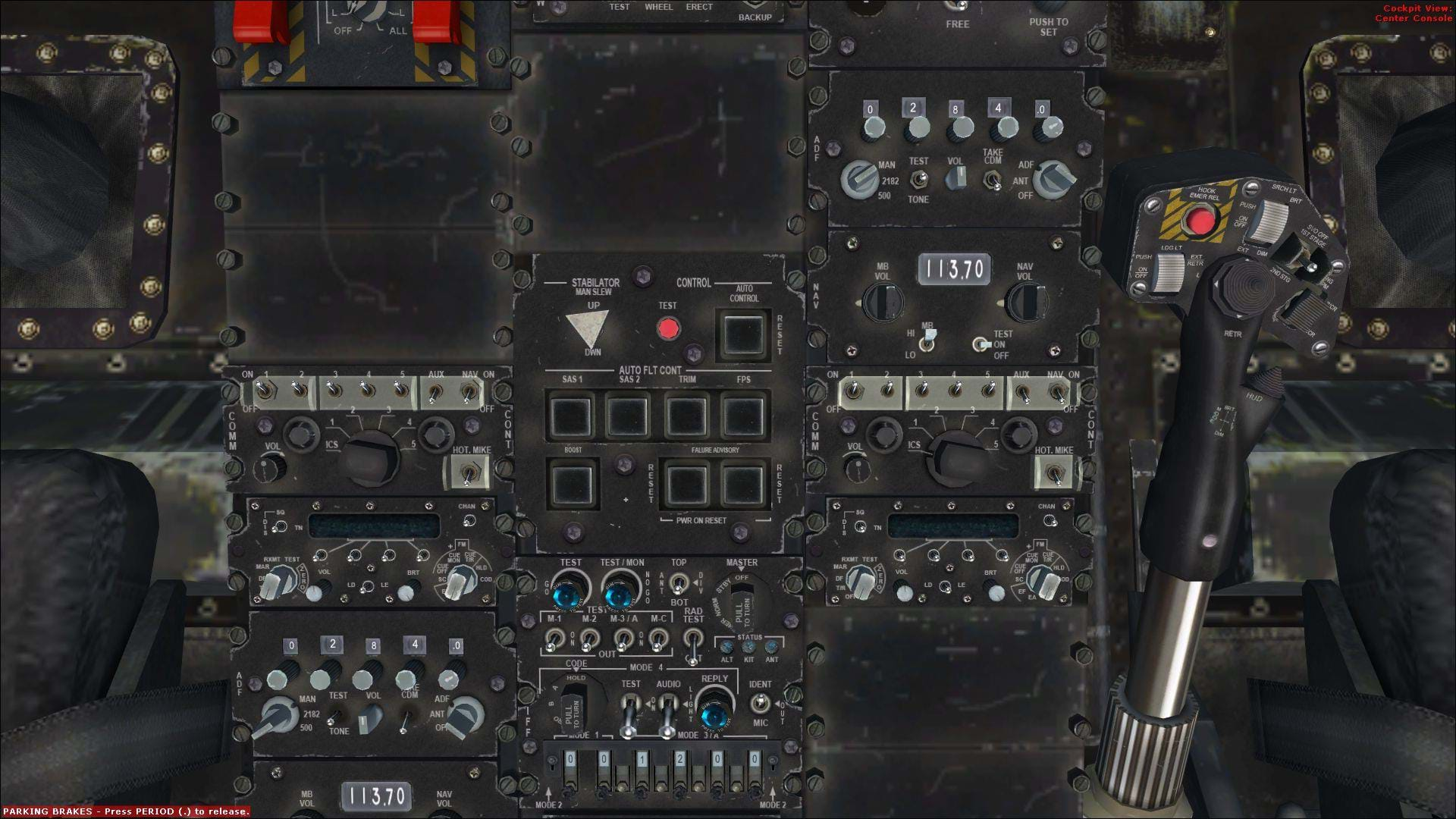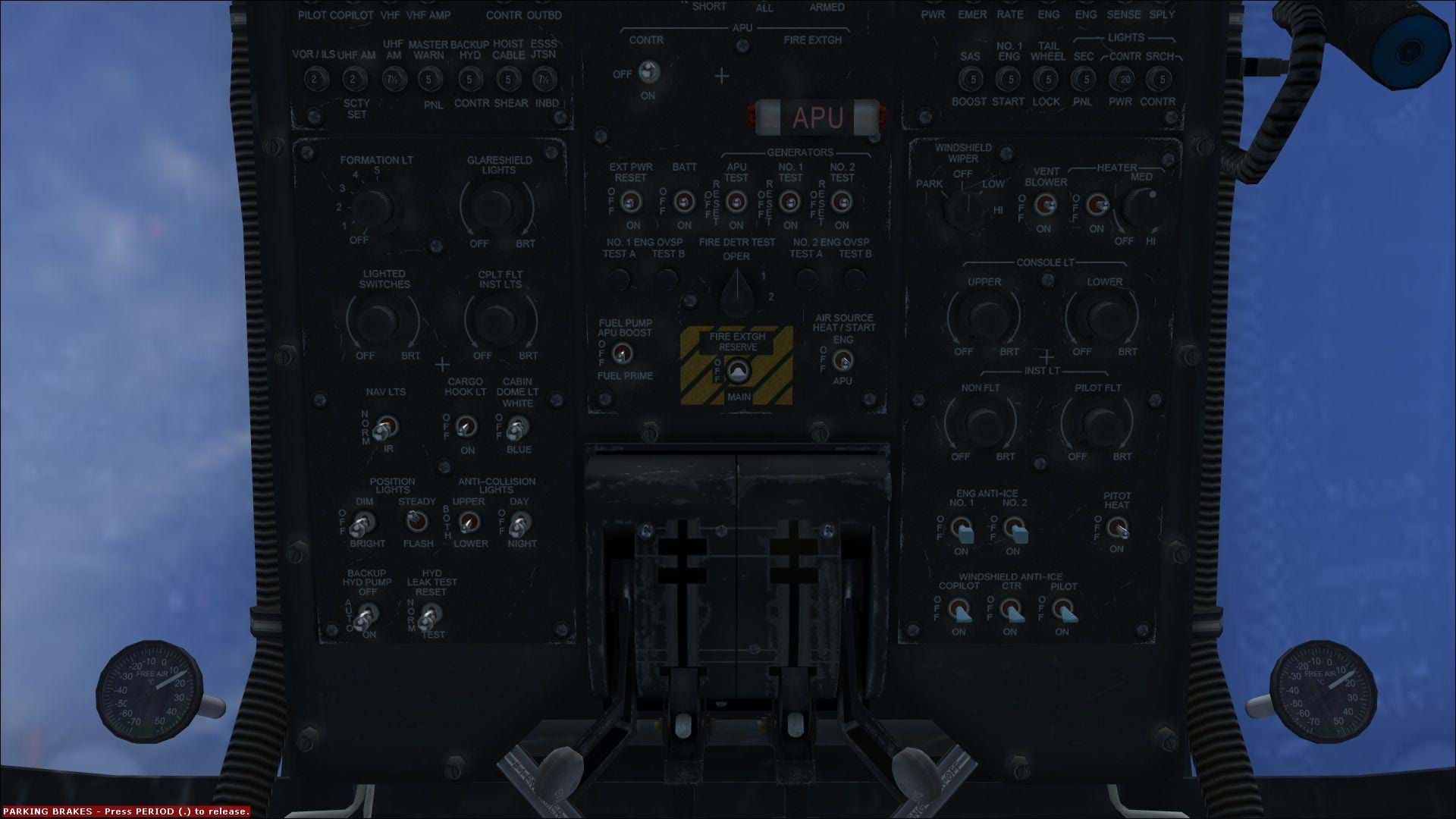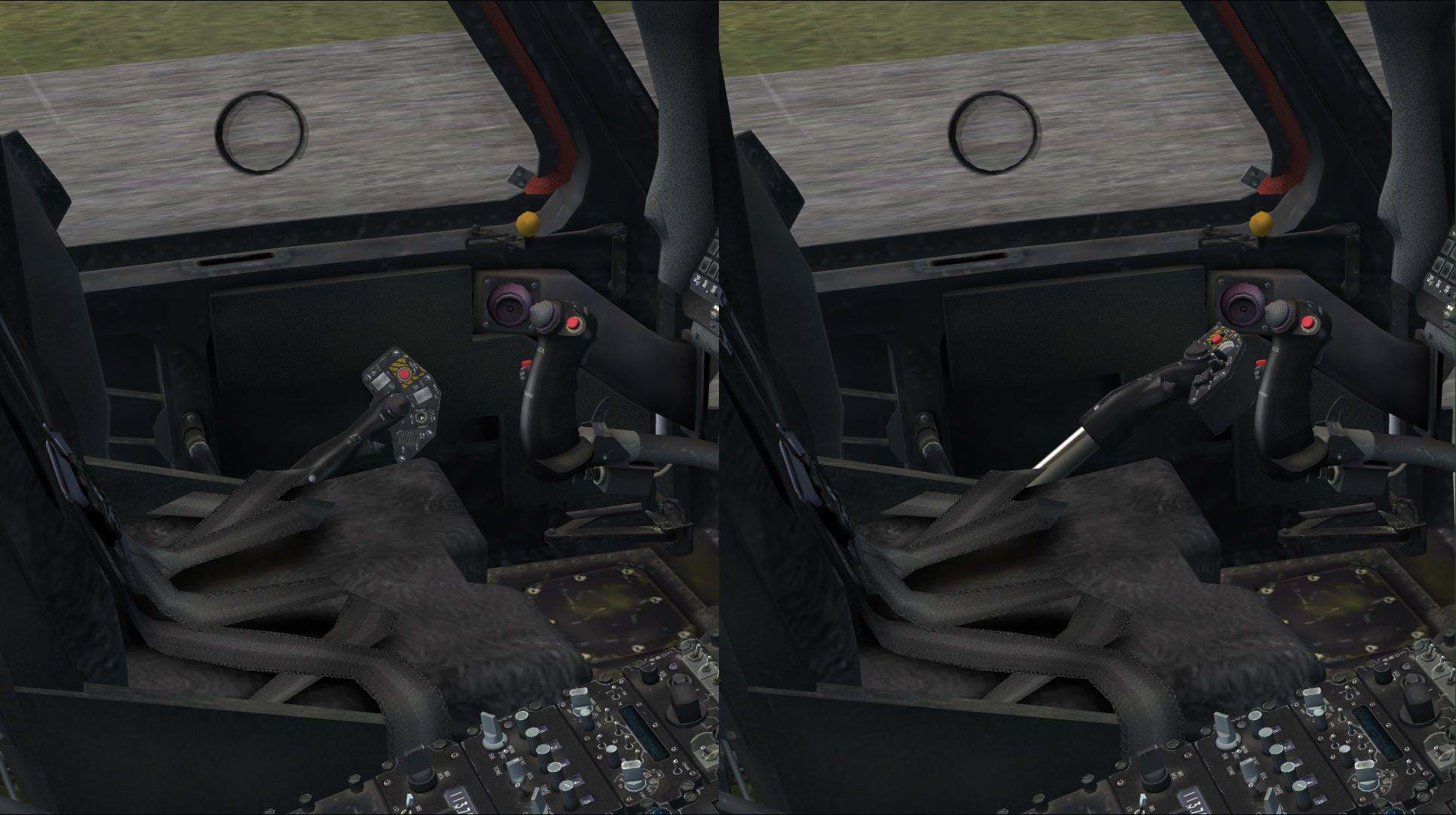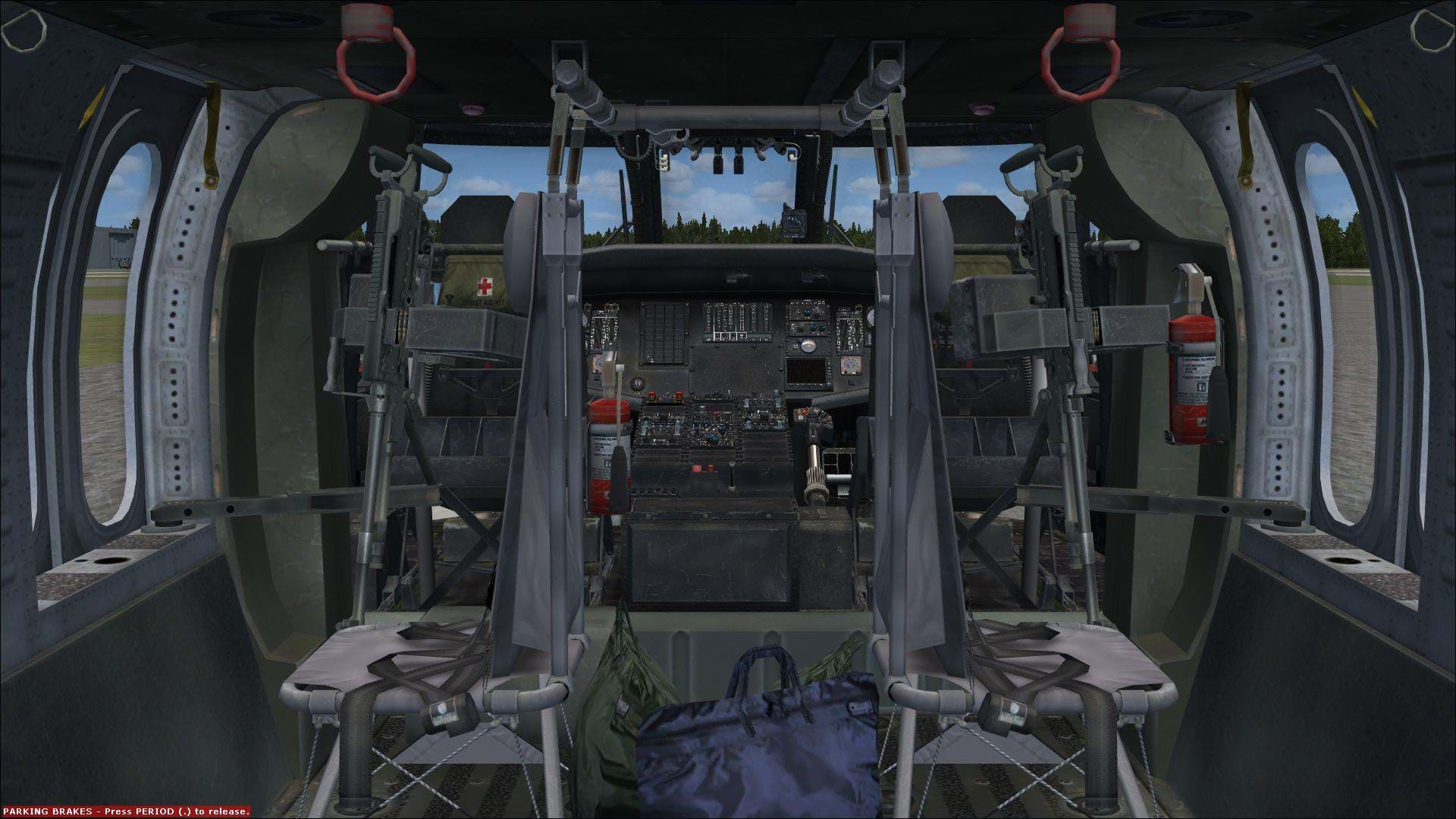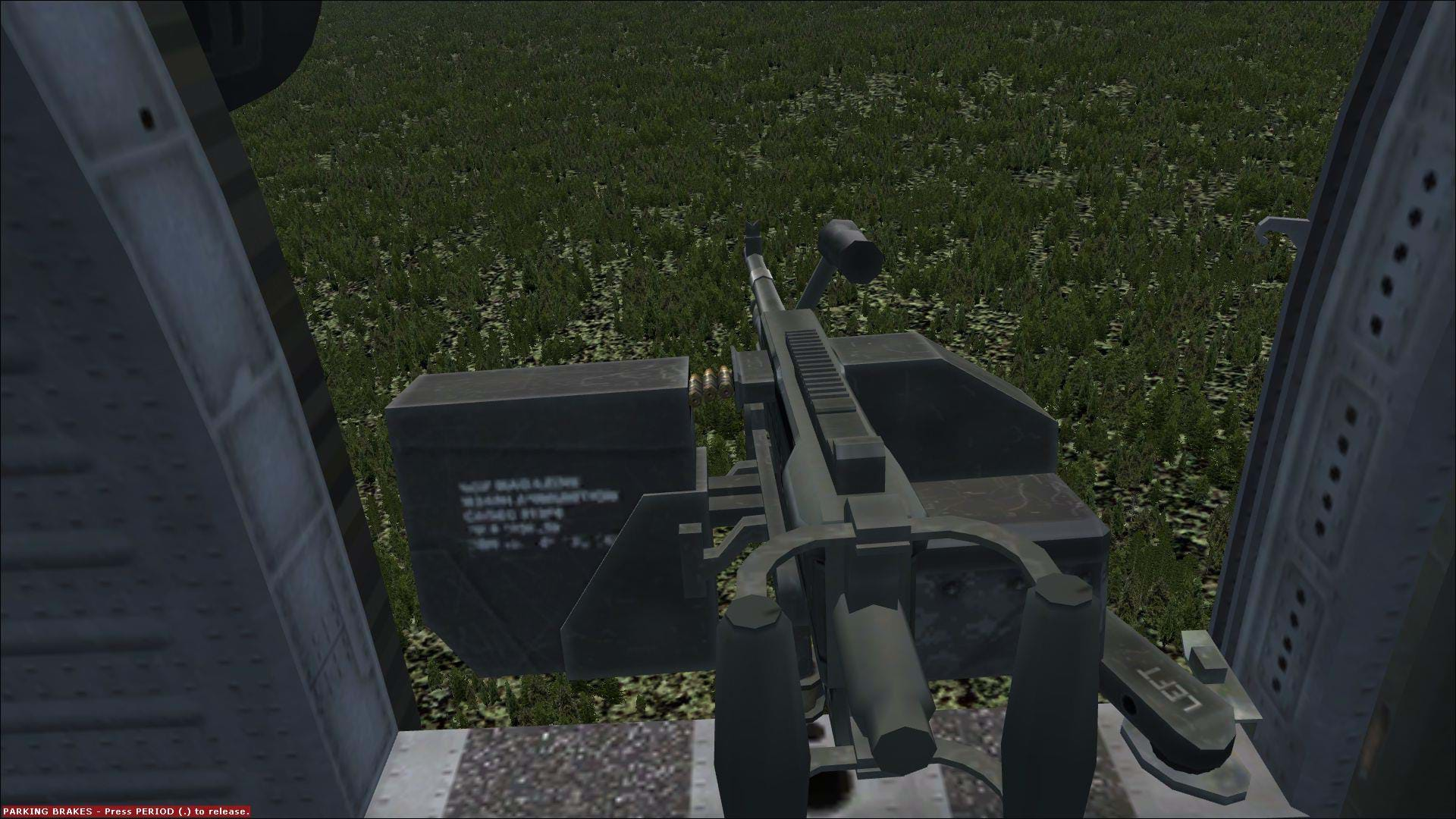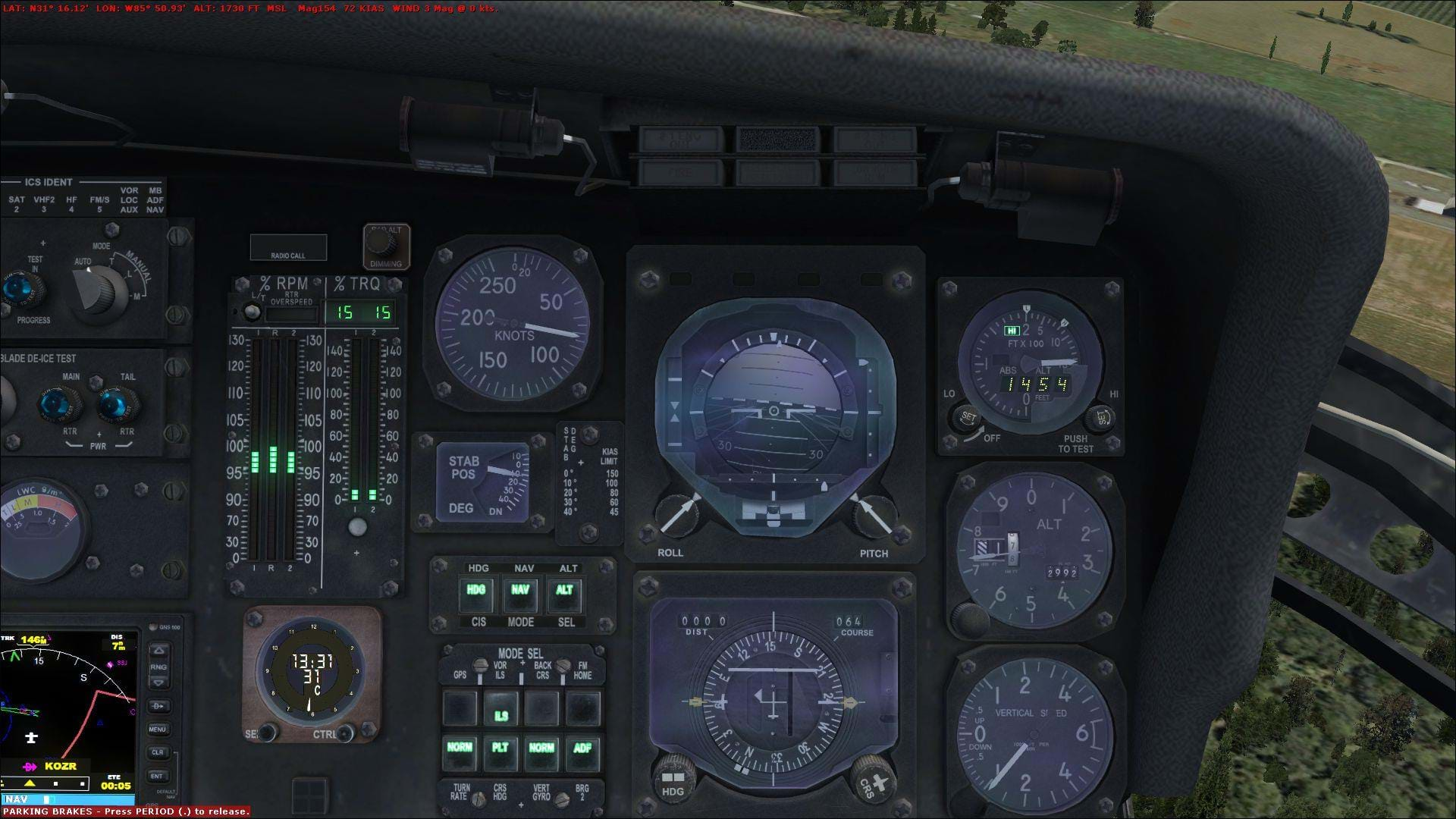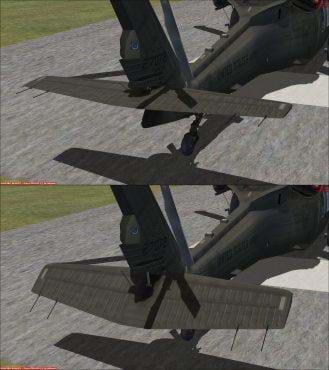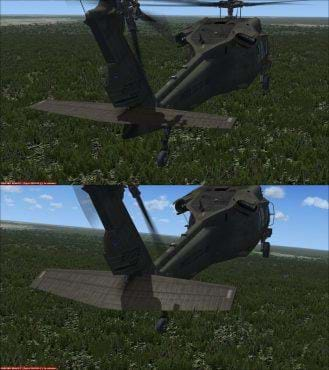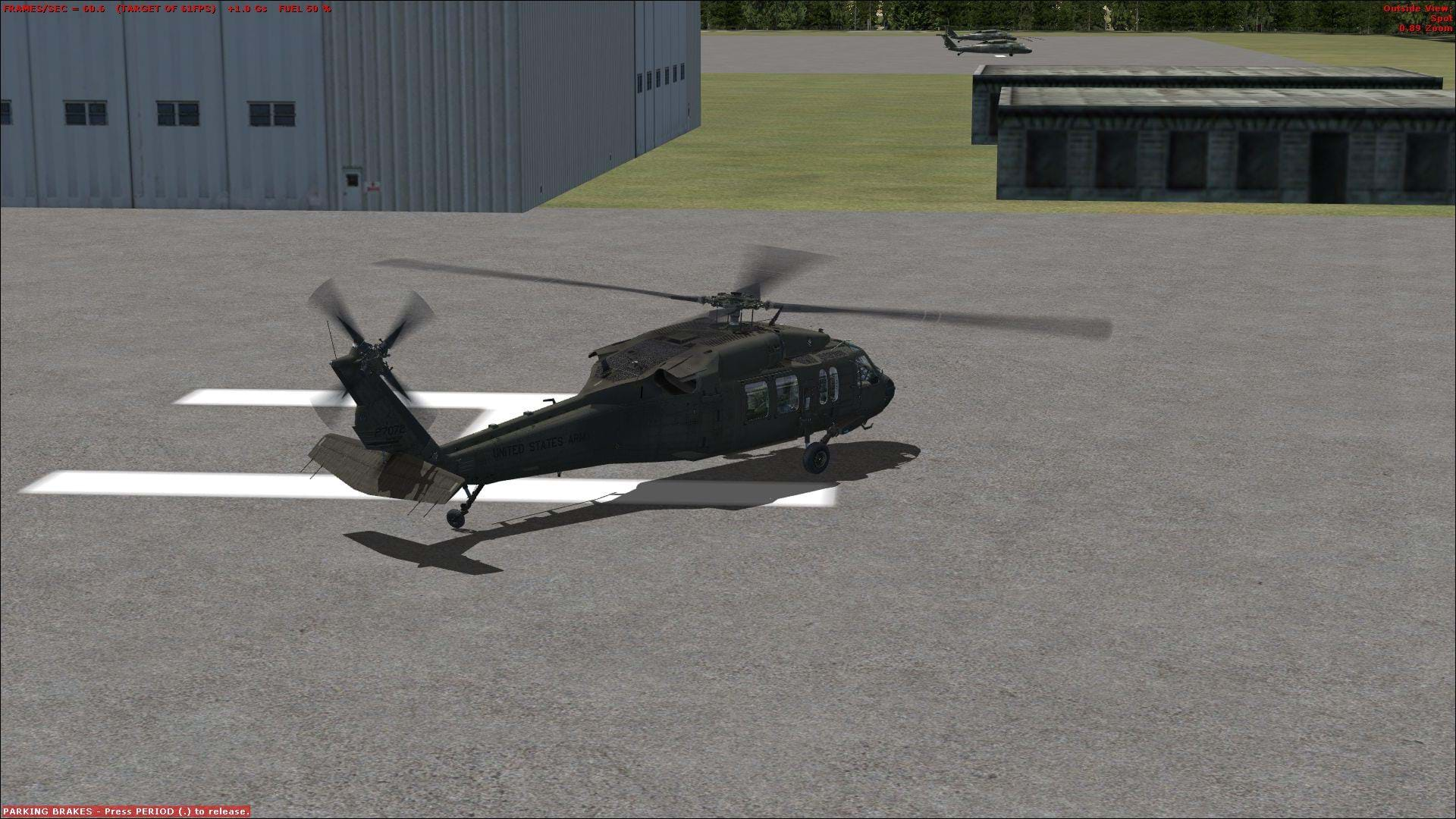Introduction
The UH-60 is an aircraft I became very familiar with early in my military career. When I enlisted in the early 2000’s, the U.S. Army made me a UH-60 mechanic in a MEDEVAC company. I spent my first tour in Iraq with the UH-60A and got to know it pretty well. I left the UH-60 community in 2004, and went on to fly other airframes as a pilot for the army. Even though I’m no longer associated with the Blackhawk, when offered the opportunity to review Cera’s UH-60L for FSX, I was too curious to say no.
Installation
The installation of the UH-60L is pretty straightforward: there’s an executable file that most FSX payware users are familiar with. Just select the folder that you have FSX is installed in and let the program do the rest.
First look
The overall visual model is outstanding. The model comes with 5 liveries to choose from: the Colombian Army, U.S. Customs, the Brazilian Air Force, the Mexican Federal Police and the U.S. Army.
Being an Army guy, I naturally chose the U.S. Army paint scheme for my test flight. If I had one complaint about the paint job on the U.S. Army livery, it’s that it’s a little bit too clean and neat looking on the outside. Cera did add a good amount of soot to the transition section of the aircraft right behind the exhaust, but everywhere else, the fuselage looks like it’s fresh from the paint shop.
When it comes to a detailed visual model, Cera is one of the best. The UH-60L carries on this tradition and is no disappointment when it comes to details. One of the particular details I enjoyed was the paint erosion on the main rotor blade leading edges. Unlike the fuselage that was squeaky clean, the main rotors look as if they’ve been battling the elements just like their real world counterparts.
The main rotor and tail rotor systems are recreated in superb detail, the main rotor especially. The lead lag dampers, bifilar system, blade pins, BIM indicators and nitrogen servicing port caps and every other component of the main rotor are represented beautifully. Many of the details might easily be missed by someone who hasn’t spent a lot of time with this aircraft, despite that, Cera put them in anyway.
The pilot and copilot crew station are extremely well done. Here again we see Cera's passion for detail, and this cockpit looks like it’s been used. Cover panels have scrapes, the area around rotary knobs have visible wear. It looks like what a typical army aircrew would see when getting into their aircraft. The Power control levers are animated, Idle stop latches as well as the starter buttons are animated and move as they would in the actual aircraft.
The Garmin GPS that is installed isn’t standard on any U.S Army rotorcraft that I’ve seen other than perhaps the TH-67A, or UH-72A. So it does look a little out of place on the UH-60L. The Garmin is familiar to most FSX users, so it’s placement there was probably a calculated compromise Cera made for the enjoyment of FSX users. In my opinion the cockpit is modeled well enough for that little discrepancy to be forgiven.
Another fantastic detail is the animation on the Copilot collective. To help the pilot in the left seat get in and out of the aircraft a little easier, Sikorsky made a collective that can be put into a stowed configuration. Cera could have left this detail out and 90% of the simulation community wouldn’t have noticed. But Cera put it in anyway, and it’s animated very accurately.
Being a former UH-60 Crew chief, I really appreciated the attention paid to the cabin crew area. Both door gunner positions are modeled very well, right down to the sound proofing, crew seats and nylon strap handles in the windows. Cera also gives you the opportunity to sit in the crew chief/door gunner position via the view toggle key. The crew windows and M240 machine guns are animated, and are mouse clickable.
There may be a few inaccuracies in the Visual Model, but to point them out would be more nitpicky than I’m willing to be. Overall, this is a fantastic representation of the UH-60.
Sounds
Having spent a lot of time in the back of a UH-60, the internal sounds are pretty accurate. I’m confident that these were taken from actual recordings of the inside of a UH-60. If I had one critique it would be that there is no variance in the sound of the engines during power changes via the collective pitch. Sitting in a UH-60, especially in the back, you can hear the wine of the two engines increase as the collective is raised, and the opposite when it is lowered. This effect is missing, but it’s likely because of the limits of FSX. The external sounds seem to be based on good quality sound recordings of an actual UH-60. One cool thing about the UH-60 is that the sound of the APU is loudest on the side of the APU exhaust. I thought that was a very nice detail that adds to the realism.
Systems
Cera's Bell 222 is one of my favorite aircraft for FSX, not only because I’m one of the world’s biggest Airwolf fans, but because of its detailed start up and shut down procedures. Cera brought that detail to the UH-60L.
If you’re a simmer who enjoys a lengthy start up, by the checklist, Cera has got you covered with the UH-60L. If you’re the type who just likes to hop in and pull pitch, Cera has an option for you too. The UH-60L comes with a similar interaction menu as Cera’s other helicopters. For the hardcore guys and gals who love the checklist, cold and dark is for you. This is probably going to be a little bit more complex than what you may be used to in an FSX helicopter, so I advise you to look at the user’s guide and familiarize yourself with the various buttons and switches. If you’re making the jump from Ceras 222, or 212, expect a longer start up with a few more steps. The UH-60 comes with a separate checklist in PDF format that closely mirrors some of the pages in the actual checklist.
The UH-60 has an onboard Auxiliary power unit (APU) that provides pressurized air, electrical and hydraulic power to the aircraft prior to engines coming online. Up until now, I’ve never seen an APU modeled well in a FSX helicopter. The APU systems modeling are not perfect, but it’s as good as FSX will allow. The same can be said for all of the other systems modeled for this aircraft, with the exception of a few things that we’ll talk about next.
The trim ball in this aircraft is rock solid. Which may sound like a good thing at first, but in reality, it’s not. The trim ball should move left or right when the aircraft starts to get out of aerodynamic trim. In this test, on a no wind day, the trim ball didn’t budge until I purposely kicked it out of trim so far I was practically flying sideways. And when I finally did get some deflection in the trim ball, it was moderately displaced at best. The Yaw Boost function of the UH-60’s Automatic flight control system does a really good job of helping the pilot maintain trim, but it’s not so good that the laws of aerodynamics don’t apply.
Another problem I had was that the torque indication remained static at 15% after start up. It remained at 15% for the entire time I flew it. I’m not sure why. This could just be a bug that’s already been fixed by Cera. For the entire time I flew this aircraft for this review, I had to use TGT indications to judge my power setting.
One of the coolest things about this model is the stabilator animation. Now, I know what you might be thinking, “Stabilator sounds like a made up word”, well, it kind of is, but it’s what Sikorsky, McDonnell-Douglas and Boeing call the large movable horizontal stabilizer on helicopters. Both the UH-60, and the AH-64 have them. The stabilator adjusts automatically in flight to help the aircraft minimize drag in forward flight as well as minimizing the negative effects of rotor downwash on the tail of the helicopter at a hover, when transitioning from low airspeeds. It can also be manually controlled from the cockpit by the crew to adjust the pitch attitude of the aircraft or in case of an automatic mode failure.
The stabilator on the Cera UH-60, is both manually controllable from the cockpit as well as a pretty neat automatic control as a function of airspeed like the real thing.
The stabilator position doesn’t appear to have much effect on the flight characteristics, but I enjoyed watching it move as I transitioned into forward flight.
Flight Dynamics
I’m always careful about critiquing the flight dynamics of flight simulator Helicopters, especially in FSX. There are so many variables to take into account that can affect your perception of what you consider realistic. Look at any message board or flight sim forum and you’ll find discussions, and sometimes, arguments on what is considered a good flight model, and what isn’t. So with that in mind, here’s my take on the flying qualities of the Cera’s UH-60.
In the interest of full disclosure, I’ve never flown the actual UH-60L. I do however, have over 2,500 hours as PIC of an aircraft with the same power plant,and similar weight. Match that with my experience as a UH-60 Crew chief, and a few hours in an actual UH-60A Simulator, and I can hazard a pretty good guess as to how this aircraft should behave.
Ground taxiing in the Cera UH-60L is pretty easy. The tail wheel unlock button activates the tail wheel animation of the exterior model. it looks really good on the taxi way, but doesn’t seem to actually effect ground taxiing operations.
One annoying issue I had with this model is that the parking brake release lever doesn’t always work. I tried the clickable parking brake lever as well as the assigned key stroke, and 80% of the tune it wouldn’t release. The only way to get it to work was to reload the aircraft several times. Hopefully this was just a bug on my computer or it was addressed in a patch.
Picking the Aircraft up to a hover, I was happy to see that Cera gave their model the normal nose up hovering attitude, and appropriate scheduling of the stabilator.
The Cera UH-60L moves through the sky like an aircraft twice its size in FSX. Roll rates are slow, and pitch control is sluggish as well. The amount of cyclic displacement required for starting a moderate bank angle turn or cyclic climb is way more than I would have expected. To do more aggressive maneuvers required up to full travel of the cyclic which didn’t feel realistic to me at all.
This sluggish behavior of the UH-60 flight model can have an upside. Sluggishness can also be interpreted as stability. Earlier in the review I mentioned the Automatic Flight Control System, which might be what Cera is looking to emulate in this FSX model. The AFCS has two Stability augmentation systems (SAS1 and SAS2) in addition to the yaw boost that help dampen out wind gusts and other atmospheric upsets which reduce the pilots overall workload. This stability makes Cera's UH-60L almost a hands-off experience in the sim, which brings me to my next point.
Cera chose to give the user the option to turn off SAS 1, SAS2 and the BOOST. All three of these buttons are found in the center console. From what I remember in real life, this would just make it a little less stable, because wind gusts and other factors wouldn’t automatically be corrected for by the AFCS. If you turn off the AFCS in the FSX model, the Aircraft starts to experience sudden and rapid un-commanded control animations, and the intermittent loss of control effectiveness in all axis that make hovering over a selected point on the ground impossible, and normal forward flight difficult.
I understand what Cera was going for with this, and I commend them for going through the trouble of adding this option. But I think they just went a little too far with the effects of flying without the Stability Augmentation.
With the AFCS in operation, this flight model absolutely shines as an instrument trainer. Its stability makes the UH-60 Ideal for flying in the clouds, while tuning radios and navaids. If you’re a novice IFR sim pilot, and just want to work on basic instrument flying, the low pilot work load offered by this flight model creates a very forgiving environment to develop a good instrument scan.
While getting to know this aircraft for this review I did several instrument approaches into Carins AAF and the UH-60L performed beautifully. I also flew a few IFR flights which was noticeably easier than it was in the Cera Bell 222. So if you like flying in the clouds, or are looking for a FSX helicopter to do IFR training in, this model is perfect for it.

